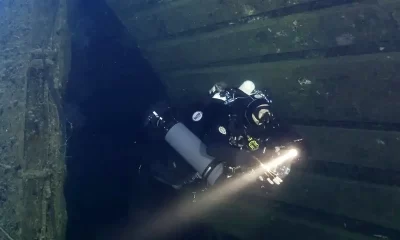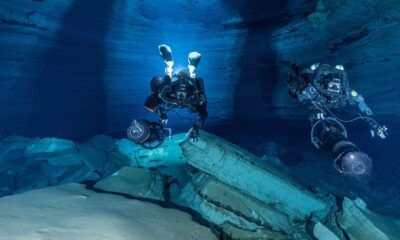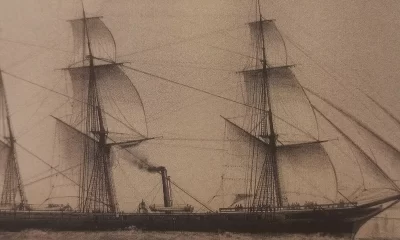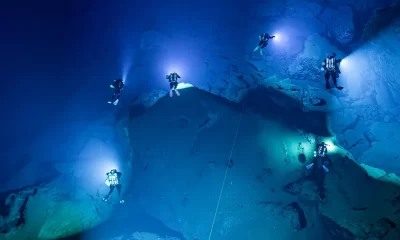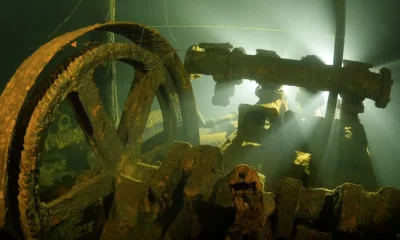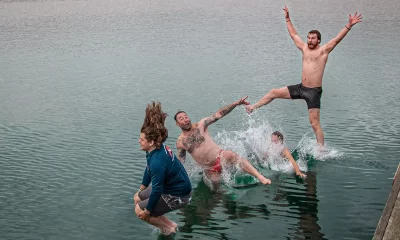Exploration
My Love Affair with the MV Viminale, the Italian Titanic
Young, poetic Italian explorer Andrea Murdock Alpini reveals the sensitivities of his not so discreet love affair with the wreck of Motonave Viminale, the Italian Titanic, which lies more than 100 meters beneath the sea near Palmi, Italy. As the Bee Gees sang, “Quant’è profondo il tuo amore?”
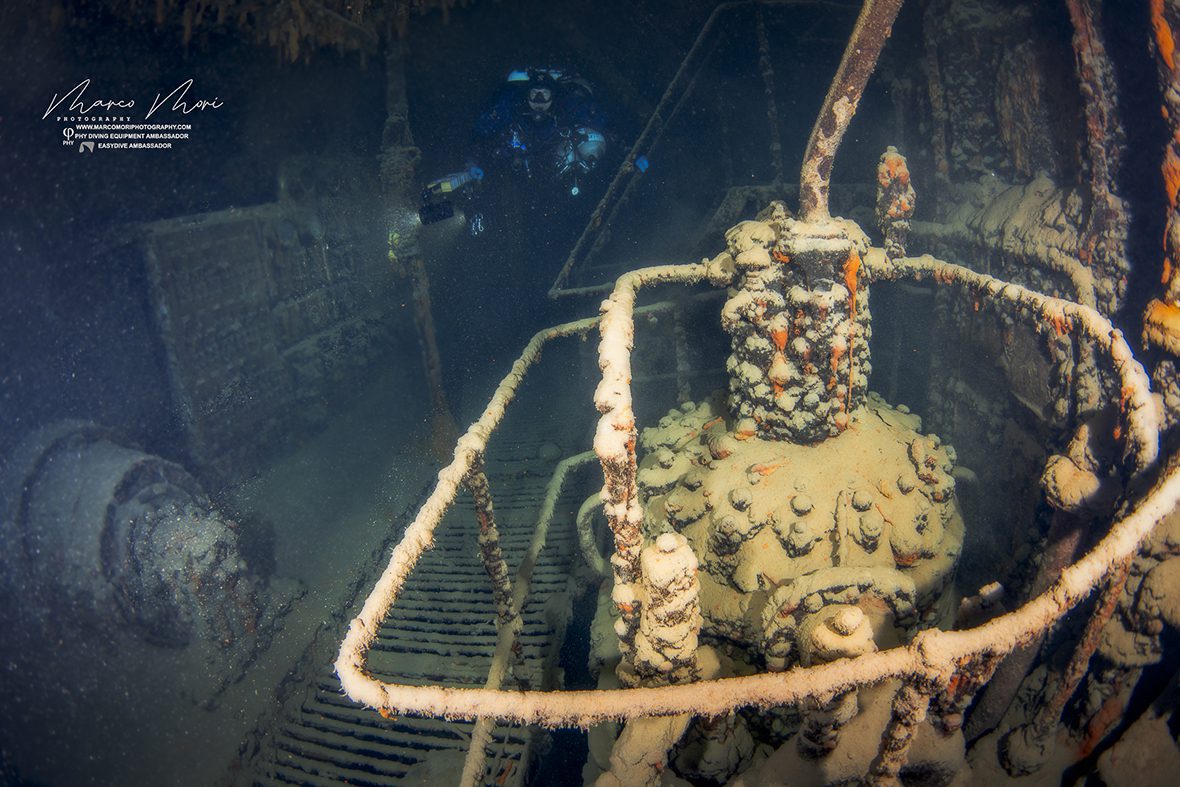
By Andrea Murdock Alpini
Translated by Lara Lambiase (DAN Europe, Diving Medical Officer) AKA Lady Murdock
Header photo by Marco Mori
Puoi leggere questa storia in italiano qui
You can read this story in Italian here
Everyone would like to run towards their dreams. Touching them is a privilege some people have. Taking them up with both hands is a blessing for just a few. The life wind often blows inconsistently and in many directions. A strong analytic effort is needed in order to understand the right path to follow.
Saying Farewell
It takes courage to leave behind a wreck. Turning and making the decision that this will be the last time you see her or that you will be close and inside her, these are some hard choices. It sounds like standing at the door saying goodbye to someone dear to you who comes from far away and is going to leave again. To say goodbye means the end and, at the same time, implies a beginning: that your relationship is moving into memory.
The first time I dived down to visit MV Viminale, I knew it would never end in a farewell. Delicate metal sheets embracing me for the first time; her touch and her voice, made up of a long-distance courtship; it all fascinated me so much that I could not help thinking about her: such a charming, elegant ship.
A transatlantic is unique in shape, dimension, history.
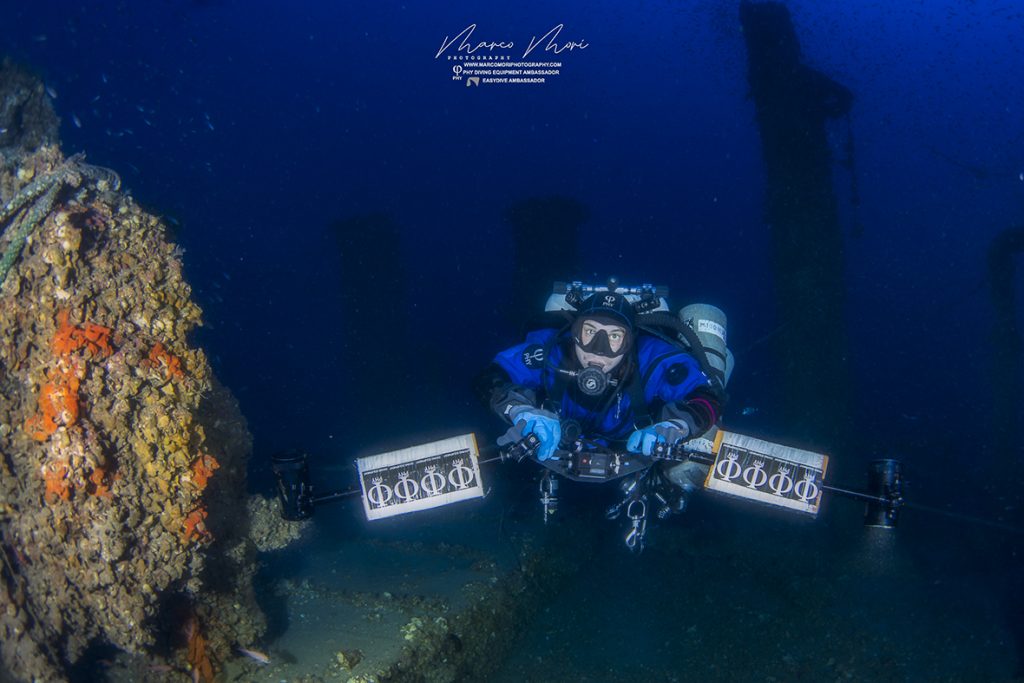
The first encounter is never to be forgotten. In just a short while it conveys the whole timbre of what is possible. Your clean-shaved deep-sea observer’s glance cannot stop at the surface anymore. He must see more. “There’s a fracture in everything,” some crack that allows entrance to the inside, a place where delicate worlds are opening or closing.
After one visit, I can say goodbye no longer.
I remember my many, earlier dives, for a full year while I waited for the right moment to meet Viminale. I was able to feel what Penelope, Ulysses’ wife, felt while waiting for her dear husband’s return, much like the endless waits sailors endure as they pass from one harbor to another, the embers of their smokes drifting into the air of the night.
Coming across Viminale’s wreck has been one of the most powerful experiences of my entire life. With my first gaze, I witnessed the past but even so, still longed for the present.
The Future of the Classic
Looking at the Viminale requires a high level of attention. Even though you believe you’re seeing the wreck, you are also watching the ship. At first sight, observers see the wreck, but if they allow themselves to watch carefully and with new eyes, they will see the fascinating Lloyd Triestino ocean liner. Once seen, it’s impossible to be ignored..
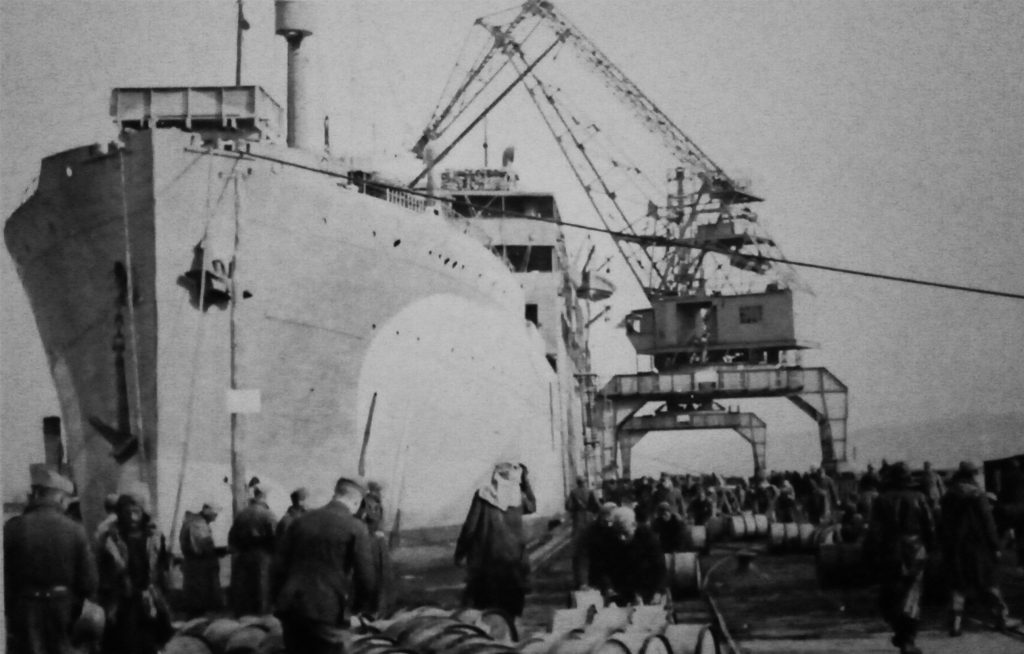
You will want to come back, again, again, and again. Your eyes will never grow tired of her beauty and your thirst for knowledge about her will lead you to explore and extend your personal new boundaries. It’s an enchantment: at the exact moment the young girl appears, she begins her transformation into a woman.
Two aspects co-exist, inseparable, but so far apart if you are not able to see.
The first aspect is related to the wreck, which is basically what every person sees while glancing at her; the second aspect represents the future of a classic look. The woman is hidden to the eye, covered by different layers that shaped her, over time.
Looking at the young girl, then the woman appears: the Ship: “She’s a force emerging from the past; she finds her strength in the tradition of love.” Love for whom? For the Sea, who she belongs to since she first floated on the surface of the water until the moment she surrendered and sank, consumed by the ocean’s swells.
I wrote about Viminale last year; my scream of joy in front of the Ship at 107 m/350 ft of depth. The reason I fell in love with this wreck was that, until then I had only seen the young girl, but suddenly the woman appeared to me.
Old alpine climber Walter Bonatti’s hands were thick, but in spite of that, the Alps’ cold wind cut them. Wreckers’ hands test the water, touch very gently, toss roughly or smoothly. Hands, for us wreckers, are more than eyes: they feel, see, and perceive. These hands sometimes plunge as do Amore’s marble fingertips into Psyche, remembering the classic tradition of sculpture. Touch is decisive, but cognitive. Hands clutch, and fingers cling into a pianist’s dance.
Painted Words

When I look at the surface from the bottom of the sea, I sometimes glimpse the far glaze of the surface. Sometimes—not often—it happens that a ray of light fills the distance separating the wreck from life. At that moment my eyes suddenly shine because I am participating in an extraordinary event; the beauty appears in its natural way. Artificial lighting is useless in that moment because your eyes are acclimated to the darkness that surrounds you. In that moment you feel your soul is made whole because you are staring at incomparable natural beauty.
This time, the heavy 45 kg ballast to be thrown on the wreck took place into my cabin van because I felt that it didn’t deserve the cold cargo bed.
Watching it, I felt sure that this was not simply naked iron thrown in the water, but I wanted to paint a love story on its sides, one to accompany it to the sea bed. I traced smooth lines with white enamel on one side, and Lara painted Latin words in capital letters on the opposite side. This was the beginning of something that could not be otherwise; the event that opened a crack in the boundary between what was and what would be.
The very first impact had changed the flow of life into an unexpected and surprising way. I took a brush and began painting on your side THAT’S AMORE, because this is how I go deep into the wreck. Each man and each ship goes through huge storms, the ship’s plank wheel and helmsman make the course, indissolubly together in spite of being visually separated. “Stay with me and the storm will cease”
Like you, none. Never.
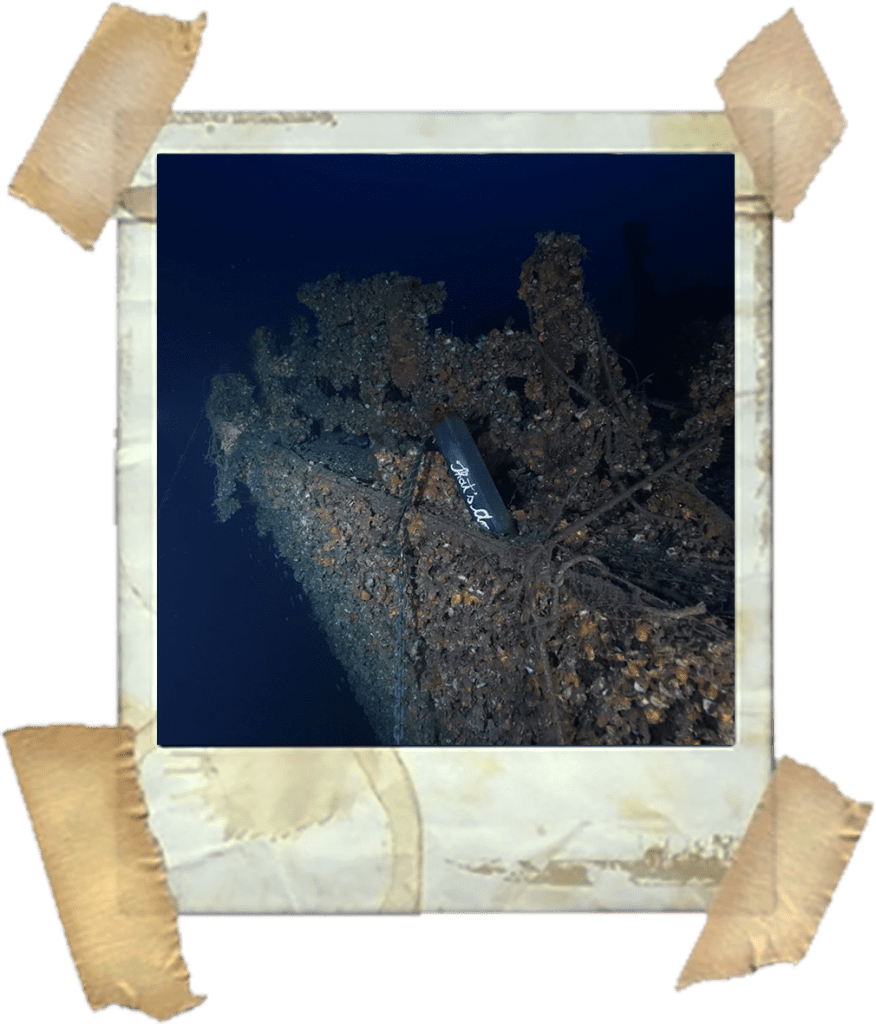
Incredulous
Attraction is a magnet that can lure you to insanity.
A year ago, I, along with two dive buddies, entered the engine room of Motonave Viminale. A year later, I along with my personal friend as well as professional photographer, Marco Mori, returned. We had prepared two dive plans. One for 25 minutes of bottom time at a depth 105 m/345 ft in the event of bad visibility and strong flow, and the second for 35 minutes of bottom time at the same depth in the event of good conditions, i.e. clear vis and little flow. We were lucky enough to encounter the second; we had a great dive on the wreck Viminale.
I remember that we had been astonished by the silence that accompanied our dive into the engine rooms of the Italian wreck, the Titanic, as we were surrounded by electric panels, pressure gauges, fire tanks, and ancient lamps that had ceased shining. I will always remember the inner silence broken by thrilling sights, our eyes filled with wonder and happiness as we finned slowly and played out the spool of line to exit with to the main deck. Those memories were the allure that had brought us to the belly of the Viminale. We were careful to move cautiously and to pay attention not to disturb our surroundings.
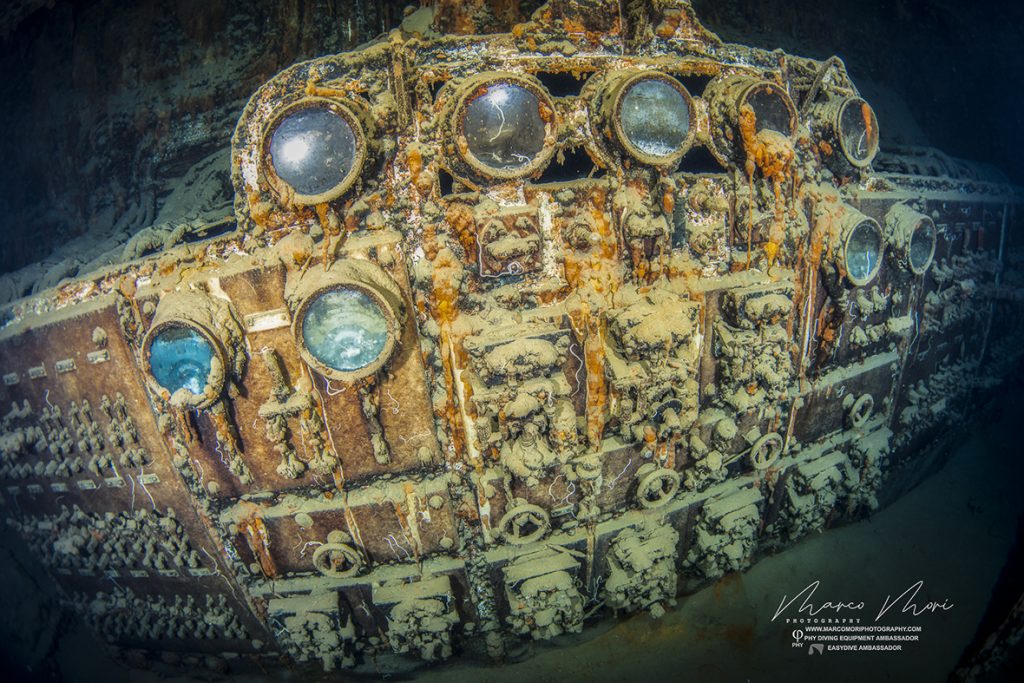
As my head emerged from the hatch, I could not believe what my eyes saw in front of me. Thanks to the darkness we were coming from and the blackness of the engine room into which we emerged, Palmi seemed more as a deep blue shade reminiscent of the calm sea overhead. The pilot house and the branch lifeboats appeared as sculptures rather than parts of a wreckage.
As we left the engine room at 108 m/352 ft, we moved forward to 90 m/294 ft depth, and I began to brush off the wooden deck with my hand and marvelled at the feeling I received from touching the beauty of the ancient wooden planking. I love iron ships, but the soft touch of wood conjures up for me the feel and scent of a long-ago era. I recollected making the same gesture with my right hand two years previously on the HMS Britannic’s promenade. It is an unforgettable sensation I will carry with me always.
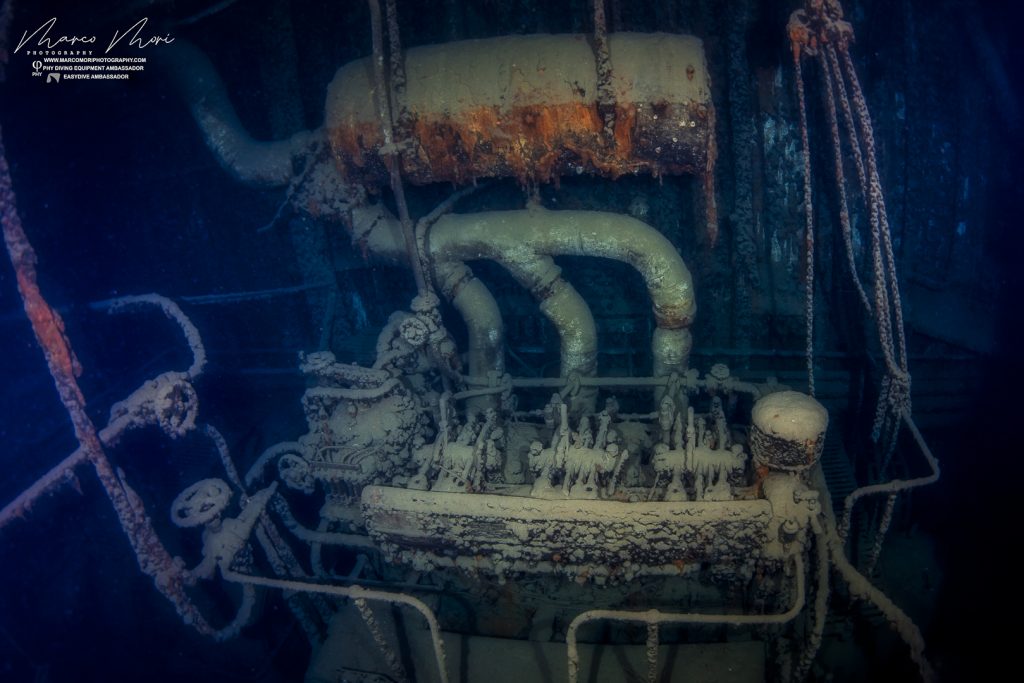
Knowing it was time to ascend, our dive computers were saying that our decompression would require 210 minutes before we could surface, I gazed lovingly one last time from the right side of the pilot house looking toward the bow. I kept all my deco cylinders away from the line and passed an oxygen cylinder to Marco as he was calling “Goodbye,” to Viminale.
Three and a half hours later, we resurfaced, both of us believing this was one of our best dives ever. We were fortunate to be able to see amazing sights, thanks to a fine mix of clear visibility, calm seas, good adrenaline and friendship. A chapter, nay a paragraph in the life of this shipwreck comes to an end yet we both feel that our job is not done. We will be back, again and again. I switched off my dive lamps. We were ready to begin our lift to the surface with the natural light remaining.
Encounters with a woman, a friend or a shipwreck can sometimes shake you up and change your perspective forever. To Viminale I think, “I will meet you again, under the guise that I simply want to talk with you.” Perhaps these thoughts are why I am awake at night, longing to see you again tomorrow. You have become a part of my life. I do not care who had you before me; I am yearning for you. That’s amore. In the end all I want is to dream about you “as I have never dreamed before.”
Puoi leggere questa storia in italiano qui
You can read this story in Italian here
Dive Deeper:
- Alpini A.M. VIMINALE: TRA BIELLE E PISTONI. SUB UNDERWATER MAGAZINE, # 400, March 2020 (Also see December 2019)
- The Italian Liners Historical Society: Lloyd Triestino
- Viminale Ocean Liner (1937-1943)
- You may also enjoy another of Alpini’s exploration stories: Isverna Cave, Diving An Underground Dacia, InDepth, V 2.5 June 2020

Andrea Murdock Alpini is a TDI and CMAS technical trimix and advanced wreck-overhead instructor based in Italy. He is fascinated by deep wrecks, historical research, decompression studies, caves, filming and writings. He holds a Master’s degree in Architecture and an MBA in Economics for The Arts. Andrea is also the founder of Phy Diving Equipment. His life revolves around teaching open circuit scuba diving, conducting expeditions, developing gear, and writing essays about his philosophy of wreck and cave diving. Recently he published his first book entitled, Deep Blue: storie di relitti e luoghi insoliti.


















